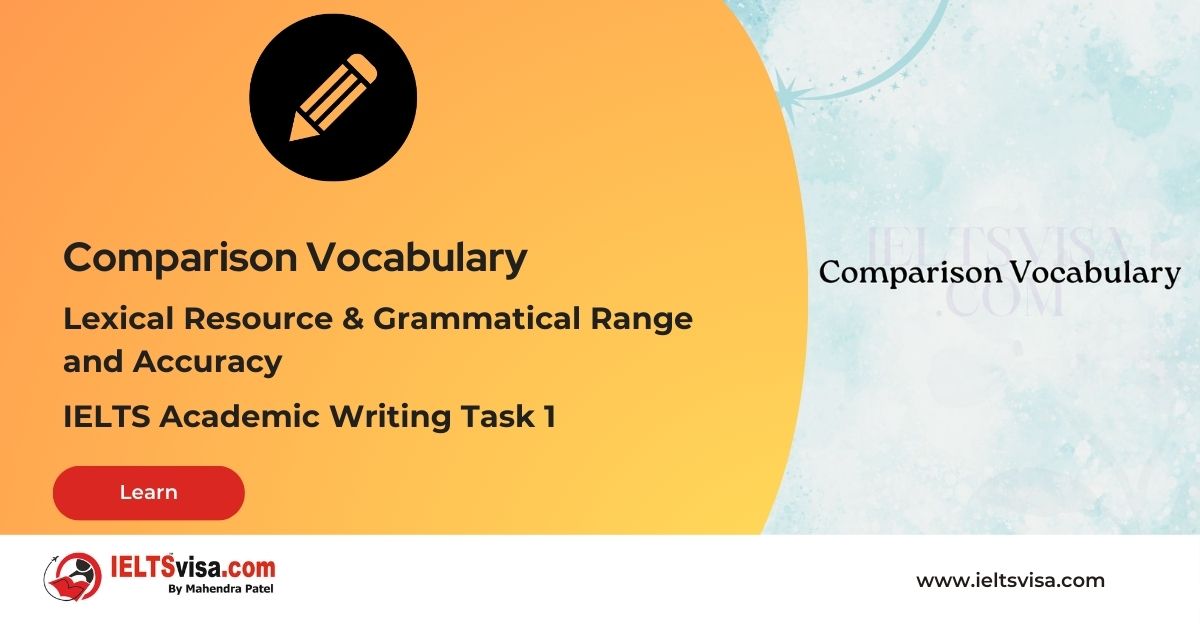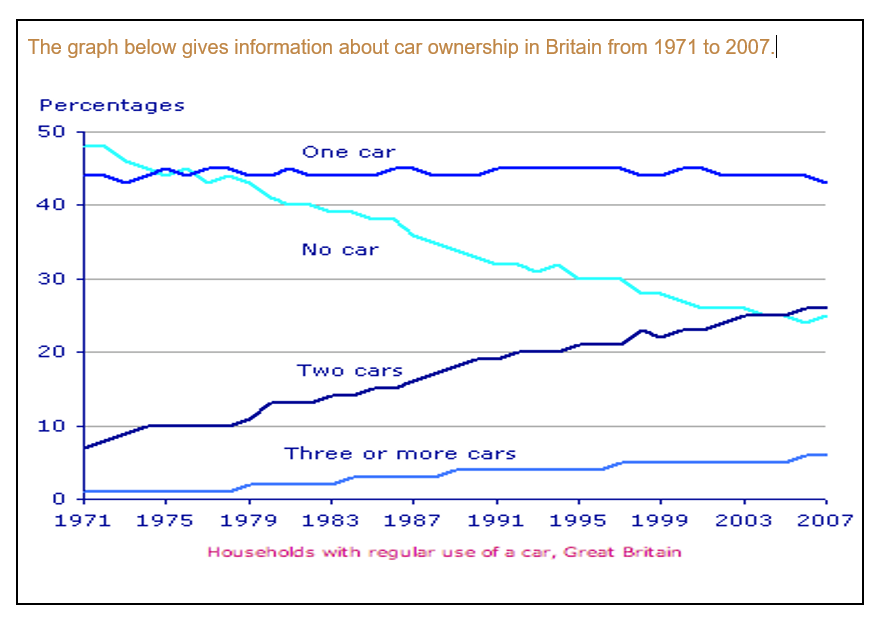Comparison Vocabulary
Lexical Resource & Grammatical Range and AccuracyIELTS Academic Writing Task 1

In the IELTS Academic Writing Task 1, demonstrating a strong command of comparison vocabulary is crucial for achieving a high score in the Lexical Resource and Grammatical Range and Accuracy criteria. This task requires test takers to describe and interpret visual information, such as graphs, charts, and diagrams, often involving comparisons between different elements or data sets. By effectively utilizing appropriate comparison vocabulary, you can accurately convey similarities, differences, trends, and relationships, showcasing your language proficiency and enhancing your overall performance.
This article will explore the importance of comparison vocabulary in Task 1, accompanied by examples and answers to help you excel.
1. Comparing Similarities:
When describing similarities between different elements or data sets, it is important to use appropriate vocabulary to highlight commonalities. Here are some useful phrases and words to convey similarities:
a. Likewise:
Example: Country A and Country B both experienced an increase in GDP during the same period. Likewise, their unemployment rates declined.
b. Similarly:
Example: The sales of Product A and Product B showed similar patterns over the course of the year, with both experiencing peak demand in the third quarter.
c. In the same vein:
Example: The number of male and female participants in the survey followed a similar trend, with both showing a gradual increase over time.
2. Comparing Differences:
When describing differences between different elements or data sets, appropriate vocabulary is necessary to highlight variations. Here are some useful phrases and words to convey differences:
a. Conversely:
Example: While the price of oil rose significantly, the price of natural gas, conversely, declined during the same period.
b. In contrast:
Example: The consumption of soft drinks increased among teenagers. In contrast, the consumption of sugary beverages among adults decreased.
c. On the other hand:
Example: Company A experienced a decline in revenue. On the other hand, Company B reported a significant increase in sales.
3. Comparing Trends:
When describing trends or changes over time, effective comparison vocabulary can help express the direction and magnitude of the changes. Here are some useful phrases and words to convey trends:
a. Significantly:
Example: The population of City X increased significantly from 2000 to 2020, more than doubling in size.
b. Substantially:
Example: The average temperature in the region decreased substantially over the past decade, reaching record lows.
c. Marginally:
Example: The number of tourists visiting the country increased marginally in the last year, showing a slight upward trend.
4. Comparing Quantities:
When comparing quantities or proportions, specific vocabulary can be used to express differences or similarities. Here are some useful phrases and words to convey quantities:
a. A significant disparity:
Example: There was a significant disparity between the number of male and female participants in the survey, with males outnumbering females by a large margin.
b. A slight variation:
Example: There was only a slight variation in the percentage of students who passed the exam between the two schools.
c. A substantial difference:
Example: There was a substantial difference in the price of the two products, with Product A being considerably more expensive than Product B.
Using appropriate comparison vocabulary in Task 1 helps accurately convey the relationships, similarities, differences, and trends in the visual information provided. Selecting the most relevant vocabulary and phrases to convey your message effectively is important. Practice incorporating these comparison vocabulary words and phrases into your writing, and remember to proofread for clarity and coherence.
In conclusion, a strong command of comparison vocabulary is essential for achieving a high score in the Lexical Resource and Grammatical Range and Accuracy criteria of the IELTS Academic Writing Task 1. You can effectively convey the information provided and enhance your overall performance by utilizing appropriate vocabulary to describe similarities, differences, trends, and quantities. With consistent practice and attention to detail, you will excel in Task 1 and achieve success in your IELTS examination.








Our Books
Master IELTS Speaking Part 1
IELTS Writing Task 1 Book
IELTS Writing Task 2 Book
Practice IELTS Other Modules
IELTS Listening
The IELTS Listening test assesses how well you can understand spoken English in various contexts. It lasts about 30 minutes and is divided into four sections with a total of 40 questions. The listening tasks become increasingly difficult as the test progresses.
IELTS Academic Reading
The IELTS Academic Reading section assesses your ability to understand and interpret a variety of texts in academic settings. It is designed to evaluate a range of reading skills, including skimming for gist, reading for main ideas, reading for detail, understanding inferences, and recognizing a writer's opinions and arguments.
IELTS Speaking
The IELTS Speaking test assesses your ability to communicate in English on everyday topics. It lasts 11-14 minutes and consists of three parts: introduction, cue card, and a discussion based on the cue card topic.
IELTS General Reading
IELTS General Reading tests your ability to understand and interpret various types of texts. Here are some key areas and types of content you can expect to encounter in the reading section, along with tips for effective preparation.
IELTS Academic Writing Task 1
In IELTS Academic Writing Task 1, you are presented with a visual representation of information, such as graphs, charts, tables, or diagrams, and you are required to summarize, compare, or explain the data in your own words.
IELTS General Writing Task 1
In IELTS General Writing Task 1, you are required to write a letter based on a given situation. The letter can be formal, semi-formal, or informal, depending on the prompt. Here’s a breakdown of the key components to include in your letter
IELTS Academic Writing Task 2
In IELTS Academic Writing Task 2, you are required to write an essay in response to a question or topic. Here’s a guide to help you understand the essential elements of this task
IELTS Exam Tips
To succeed in the IELTS exam, practice regularly, familiarize yourself with the test format, improve your vocabulary, develop time management skills, and take mock tests to build confidence.
Grammer for IELTS
Grammar is the foundation of effective communication in English. Understanding tense usage, subject-verb agreement, and sentence structure enhances clarity and coherence in writing and speaking.
Vocabulary for IELTS
Vocabulary plays a crucial role in the IELTS (International English Language Testing System) exam, especially in the Speaking and Writing sections. Here’s an overview of why vocabulary is important and how it impacts your performance
RECENT IELTS SAMPLES QUESTIONS AND ANSWERS
Task 1 – Line Graph – Car Ownership in Britain 1971 to 2007
Common questions for the line graph, bar graph, pie chart, and table Graph Type: Line Graph Title: Car Ownership in...






